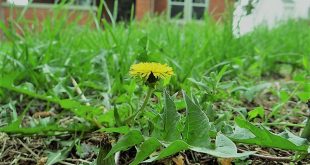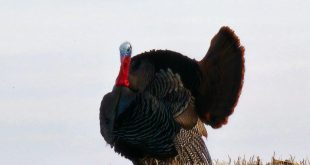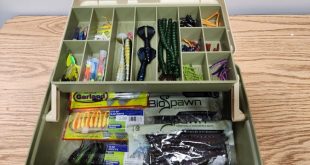By Joel W. Helmer, Trapshooting Coach
Taking a walk down the quarter-mile long row of trap houses during the Cornhusker Junior/Senior High School Trapshoot is something every Nebraskan should do at least once. It is a unique sensory experience. First is the noise – thousands of rounds of shotgun shells exploding and mixing together with the talking, clapping, and cheering of friends, family, teammates, and coaches. Then the smell of spent gunpowder mingling in the air with grilling burgers, funnel cakes, and barbecue. Finally, and most importantly, the wonderful feeling you get seeing thousands of young people safely and responsibly handling firearms while competing in trap shooting.
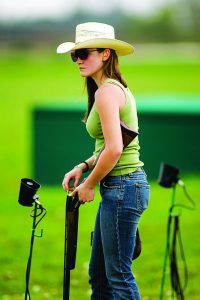
This spring marks the 48th year for the Cornhusker Trapshoot, one of the nation’s longest running and largest tournaments of its kind. From May 4-6 more than 2,500 high school and junior high competitors from Nebraska and across the nation will descend on the Nebraska Trap Shooting Association’s home grounds near Doniphan, swelling the town’s population from 840 into the thousands. It is an event like no other.
What brings these young shotgunners to Doniphan is American trap. In this event squads of five shooters position themselves on stations, called posts, 16 yards from an automated thrower located inside a trap house. At the shooters’ command the thrower launches a 4¼-inch clay pigeon randomly somewhere within a 34-degree angle. According to the official rules book, the clay must fly about 50 yards, meaning it is moving at a brisk 42 mph. After shooting at five clays the squad rotates to the next post until a round of 25 is complete. High school competitors shoot three rounds of “sixteens” on Friday and then are moved farther back based upon their score. This “handicap” event on Saturday consists of 75 targets, for a final total of 150. Junior competitors shoot 100 targets from the 16-yard line on day one of the tournament.
The Cornhusker Trapshoot began rather inconspicuously in 1970 as a friendly duel between Northeast Community College and Chadron State College. Organized by Dave Wells and Jim Carlisle, the event grew quickly, with a high school division added in 1972. Three years later the event expanded to two days with the Nebraska Game and Parks Commission now sponsoring the event and awarding the coveted Cornhusker Cup to the top overall high school shooter. In 1976, the event moved to its current location in Doniphan and by 1978 included not only a third day of competition but also a junior division for 6th-8th graders.
Over the next several decades, attendance at the state tournament grew steadily but slowly. Then things began to change. New high school and 4-H teams began popping up around the state and rosters of existing teams grew. For example, as recently as 2010 there were only 1,150 competitors at the Cornhusker Trapshoot, half as many as now. In the more heavily populated eastern third of Nebraska, where many teams belong to the Eastern Nebraska Trapshooting Conference, the growth has been phenomenal. In the last 15 years, the conference has tripled in membership from 500 to more than 1,600, necessitating dividing the conference into three divisions and expanding the weekend tournaments to two days.
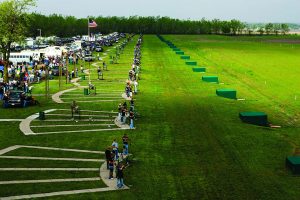
What is happening in Nebraska is also taking place nationally, especially across the Midwest. I attended the Minnesota State High School Clay Target League championship several years ago and was astonished to see more than 5,000 competitors. This summer they are expecting over 8,000. Minnesota’s league is managed by the USA High School Clay Target League, which now has affiliates in 20 states. The Scholastic Clay Target Program, a youth development program established by the National Shooting Sports Foundation, is another major player, with its national tournament in Ohio attracting thousands of shooters. Others compete through their 4-H clubs, with the 4-H Shooting Sports National Championships now held at Heartland Public Shooting Park in Grand Island each June.
So why this sudden interest in trap shooting? Ted Vasko, Creighton Prep’s head coach, points to the “all inclusive” nature of the sport. “Most coaches do not cut athletes from the team. Everyone gets to participate.” This contrasts with the hyper-competitiveness and early specialization of more traditional sports, making it difficult for many to get playing time or even a spot on the team.
All-inclusive also means young women competing alongside young men. Marian High School’s long-time head coach Bruce Esser points to the increasing participation by girls as a major factor in the growth of the sport. “From my perspective as a girls’ school coach the biggest increase has been in participation by girls. For example, in 2000 our conference had only 25 girls, but last year there were 220.” Coach Vasko agrees: “The shooting sports do not limit you by size and strength. Anyone can compete.”
Parents and young people also enjoy the family atmosphere surrounding the sport. Keith Brunkow, coach of one of the state’s largest teams at Norris High School, explains: “The atmosphere surrounding a shoot is a family atmosphere; teams put up tents, bring trailers and have cook-outs. I have parents of graduates tell me how much they miss Saturdays at the range. A few years ago a group of parents missed their Saturday shoots so much they continued meeting over breakfast after the season was over.”

The shotgun sports are also growing because busting clays is just plain fun. Nothing beats watching a clay turn to dust. And for beginners it’s a sport where they can improve quickly and literally see their success explode in front of their eyes. In today’s technology-saturated culture young people are conditioned to seeing immediate results, whether it’s playing video games or using social media. Shooting clays provides instant gratification while getting young people outside and away from their screens. Regardless of the why, parents, coaches, and administrators appreciate the life skills and lessons the shooting sports teach children. Handling a shotgun at a young age demands both responsibility and accountability. Coach Vasko believes that parents feel this generation is more protected than they were and therefore not given enough responsibility. “Being given responsibility of a firearm is often the first adult thing they get to do,” he said, “and despite what we are sometimes led to believe, I think young people want responsibility. I think they embrace it.” Rob Cooksey, head of schools at Concordia Lutheran Schools of Omaha, started a team last year and the response has been overwhelmingly positive. “Trap shooting broadens our ability to add value to a student’s education and for many students it is a primary motivation to do well in school. One of our junior high shooters was struggling with ineligibility prior to shooting. He is now doing much better after finding a home on the trap team.”
Another often-overlooked benefit is to the state’s local gun clubs. Many clubs in Nebraska and around the country were struggling to stay afloat as membership aged and interest waned. With the influx of new shooters, clubs are now struggling to accommodate increasing demand. Some are now planning to build additional trap ranges and skeet fields. Terry Kriz, owner of Oak Creek Sporting Club near Brainard, has seen the change firsthand. “The increase in high school and college shooting teams has helped gun clubs across Nebraska immensely. The daily traffic at my facility has grown by 5-10 percent in the last few years due solely to high school and college shooters.” Skeet Hiers, manager of Lincoln Trap and Skeet Club, agrees: “It has helped our facility a lot. And we encourage young people by letting them shoot at a discounted rate.”
Universities in Nebraska and other states are taking notice. Although collegiate shooting teams have existed in Nebraska for many years, they were mainly student-led club teams with limited funding from the schools. Smaller, private universities are stepping in with scholarships and financial support. Midland University in Fremont and Hastings College began shooting teams in 2013, with both experiencing rapid growth. The following year I formed a team at Concordia University in Seward, while Doane University began its program this fall. Nebraska has fast become a hotbed for collegiate shooting. At last year’s national tournament in San Antonio, Texas, there were 697 students representing 76 universities. This is double the number of just four years ago.
For young shooters interested in competing in college, the main difference is the higher level of competition and number of disciplines shot. Although American trap is common, collegiate tournaments include multiple disciplines such as American skeet, double trap, wobble trap, sporting clays, five-stand and some international events as well. The good news for college coaches is that more high school shooters are expanding their shooting repertoire as the opportunities for college scholarships increase. I encourage all of our young shooters in Nebraska to keep working hard in school and on their shooting. The opportunity for you to keep competing and enjoying the shooting sports is only going to grow.

 Nebraskaland Magazine
Nebraskaland Magazine

